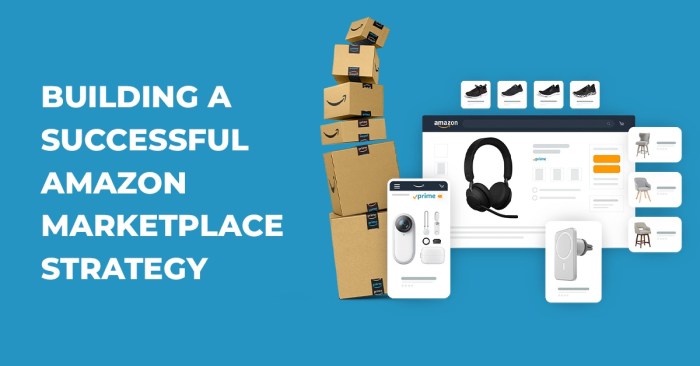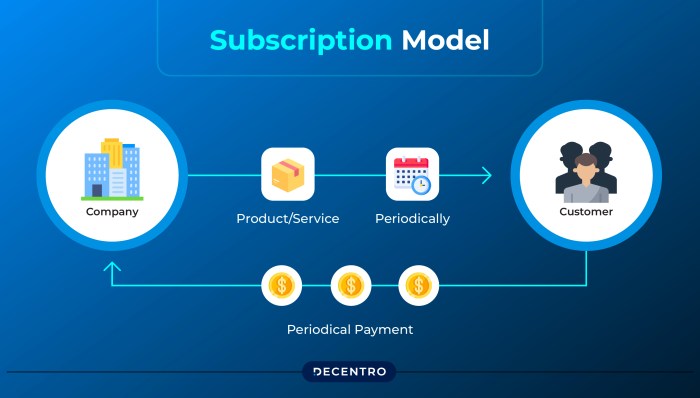Crafting an Effective Amazon Marketplace Strategy
Delve into the realm of Amazon marketplace strategy, where the key to success lies in a well-thought-out plan that can catapult sellers to new heights. This narrative unfolds a tapestry of essential components and competitive insights, offering a compelling journey for those seeking to thrive in the Amazon marketplace.
Explore the intricacies of product selection, pricing strategies, and optimizing product listings to unlock the full potential of your Amazon marketplace strategy.
Importance of Amazon Marketplace Strategy
Having a well-defined marketplace strategy on Amazon is crucial for sellers looking to succeed in the competitive e-commerce landscape. It goes beyond just listing products and involves a comprehensive approach to optimize sales, visibility, and customer engagement.
Key Benefits of a Robust Amazon Marketplace Strategy
- Increased Visibility: A strategic approach can help sellers stand out among millions of products on Amazon, attracting more potential customers.
- Optimized Sales: By understanding customer behavior and preferences, sellers can tailor their strategies to boost sales and revenue.
- Enhanced Customer Engagement: Building relationships with customers through personalized experiences can lead to repeat business and positive reviews.
Examples of Successful Businesses on Amazon
One notable example is Anker Innovations, a tech accessories brand that leveraged Amazon's platform to reach a global audience and achieve significant sales growth.
Another success story is Thrasio, a company that acquires and scales Amazon businesses by implementing effective marketplace strategies to maximize profitability.
Components of a Successful Amazon Marketplace Strategy

When it comes to creating a successful Amazon marketplace strategy, there are several key components that play a crucial role in driving sales and maximizing visibility. Let's delve into the essential elements that make up a strong strategy.
Product Selection and Pricing
Product selection and pricing are fundamental aspects of a successful Amazon marketplace strategy. Here's why:
- Choose products that have a high demand on Amazon to ensure a steady flow of sales.
- Conduct thorough market research to determine competitive pricing that attracts customers while ensuring profitability.
- Regularly analyze and adjust pricing based on market trends and competitor activity to stay competitive.
Optimizing Product Listings, Images, and Descriptions
Optimizing product listings, images, and descriptions is essential for enhancing visibility and driving sales on Amazon. Here's how you can optimize these elements:
- Use relevant s in product titles, bullet points, and descriptions to improve search rankings and attract potential customers.
- Utilize high-quality images that showcase the product from multiple angles and highlight its features to increase buyer confidence.
- Write compelling product descriptions that clearly communicate the benefits and unique selling points of the product to entice customers to make a purchase.
Competitive Analysis and Positioning
When it comes to refining an Amazon marketplace strategy, conducting a competitive analysis is crucial. By understanding your competitors, you can identify opportunities, threats, and gaps in the market that can inform your approach.
Strategies for Positioning Products Effectively
Positioning your products effectively amidst competition on Amazon requires a strategic approach. Here are some strategies to help you stand out:
- Identify your target audience: Understand who your ideal customers are and tailor your product listings to meet their needs.
- Optimize your product listings: Use relevant s, high-quality images, and compelling product descriptions to attract buyers.
- Offer competitive pricing: Stay competitive by pricing your products appropriately based on market trends and competitor analysis.
- Fulfill orders efficiently: Provide fast shipping and excellent customer service to enhance the overall buying experience.
Differentiating Products and Creating a Unique Selling Proposition
To differentiate your products and create a unique selling proposition in a crowded marketplace, consider the following:
- Focus on product quality: Emphasize the unique features and benefits of your products to showcase their value to customers.
- Build a strong brand identity: Establish a brand story and identity that resonates with your target audience and sets you apart from competitors.
- Create exclusive deals and offers: Provide incentives such as discounts, bundles, or limited-time promotions to attract customers and encourage repeat purchases.
- Solicit customer feedback: Use customer reviews and feedback to improve your products and services continuously, showing potential buyers that you value their input.
Pricing Strategies on Amazon
When it comes to selling on Amazon, pricing strategies play a crucial role in determining sales, profitability, and brand perception. Sellers have the option to choose between dynamic pricing and fixed pricing models to set the prices of their products on the marketplace.
Dynamic Pricing vs. Fixed Pricing
Dynamic pricing involves adjusting the prices of products in real-time based on various factors such as demand, competition, and market trends. This strategy allows sellers to maximize profits by setting prices that are constantly changing to reflect market conditions. On the other hand, fixed pricing involves setting a static price for a product that remains constant over a period of time.
- Dynamic Pricing:
- Allows for flexibility in responding to changes in demand and competition.
- Can help increase sales during periods of high demand by adjusting prices accordingly.
- Requires monitoring of market conditions and competitor pricing to be effective.
- Fixed Pricing:
- Provides consistency for customers and builds trust in the brand.
- May be easier to manage and requires less monitoring compared to dynamic pricing.
- Risks underselling or overselling products if the fixed price is not aligned with market conditions.
It is essential for sellers to carefully consider the pros and cons of each pricing strategy to determine the best approach for their business on Amazon.
The impact of pricing decisions on sales, profitability, and brand perception cannot be understated. By implementing the right pricing strategy, sellers can attract customers, increase sales, and build a strong brand reputation on the Amazon marketplace.
Conclusive Thoughts

As we reach the conclusion of this discourse on Amazon marketplace strategy, it becomes evident that the path to success on this platform is paved with diligent planning, strategic positioning, and a keen understanding of market dynamics. Embrace these principles to navigate the Amazon marketplace with confidence and drive your business towards prosperity.
General Inquiries
How important is a well-defined Amazon marketplace strategy?
A well-defined strategy is crucial for sellers on Amazon as it sets the foundation for success, guiding decisions and actions to maximize visibility and sales.
What role does competitive analysis play in shaping an Amazon marketplace strategy?
Competitive analysis helps sellers understand market dynamics, refine strategies, and differentiate products to stand out amidst competition.
Why is optimizing product listings essential for an effective Amazon marketplace strategy?
Optimizing listings improves visibility, attracts more customers, and enhances sales conversion rates, ultimately leading to increased revenue.




